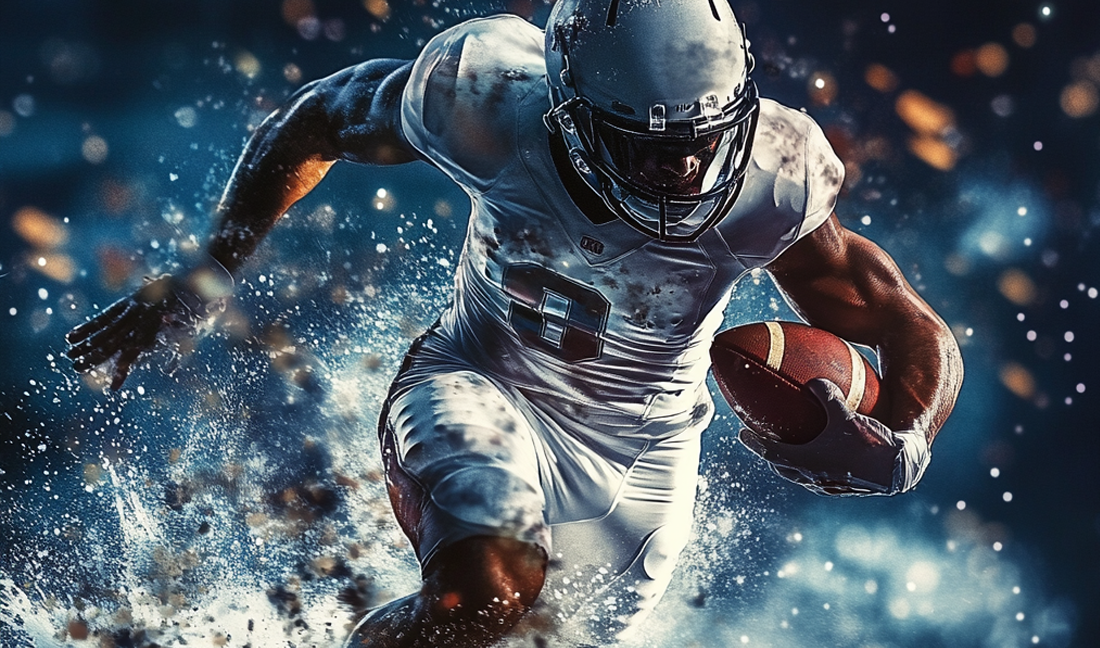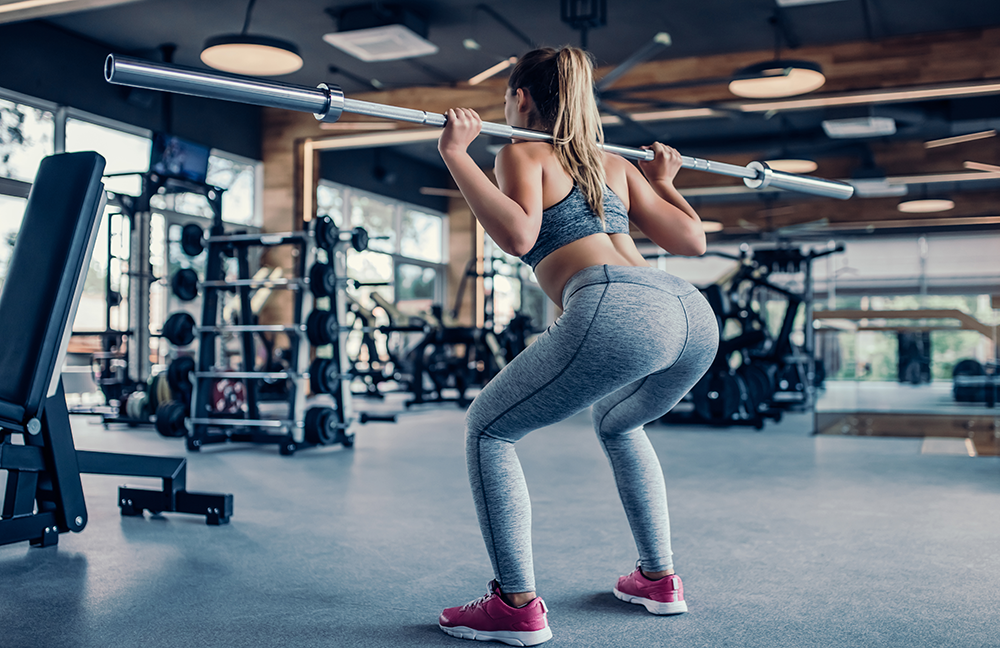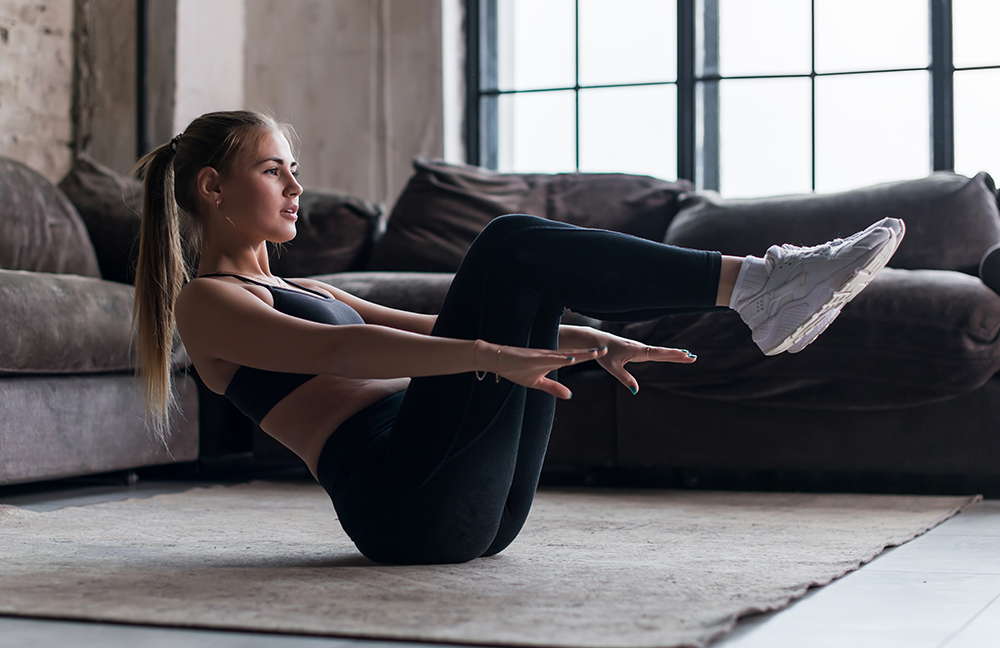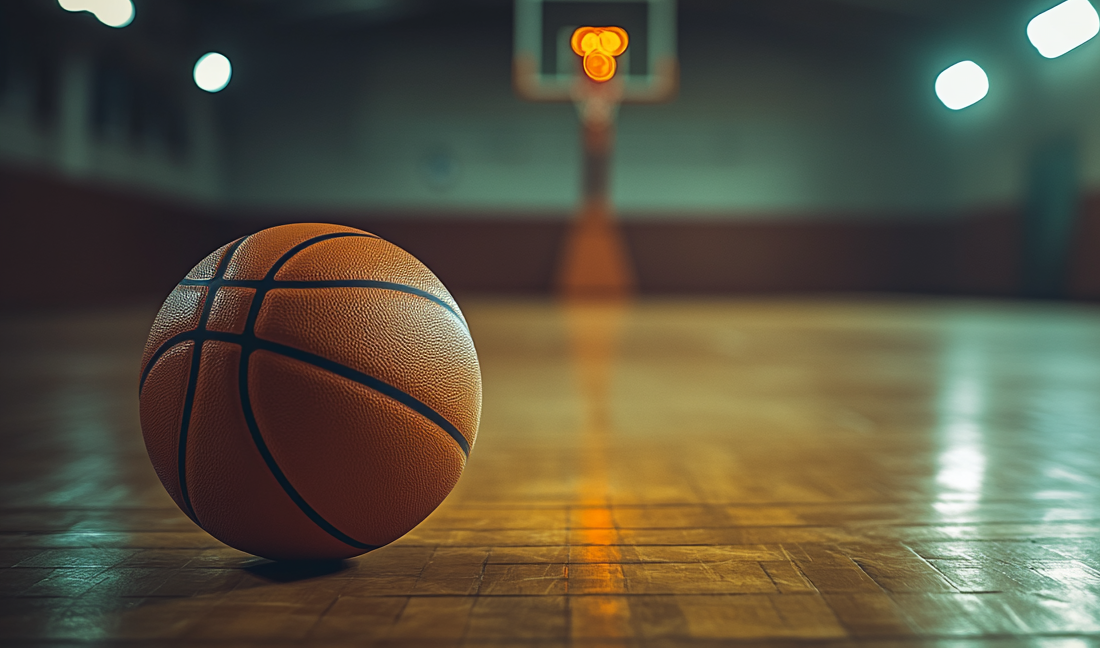Introduction
Football is a game of power, speed, and endurance. Whether you’re a lineman battling in the trenches, a running back cutting through defenses, or a receiver sprinting for the end zone, strength training is essential for peak performance. A well-structured football strength workout improves explosiveness, agility, and durability, allowing athletes to dominate on the field.
Many football players assume that weightlifting is only about getting bigger, but true strength training focuses on functional power, ensuring that every movement translates into real game-time performance. A football strength workout builds the lower-body force needed for sprinting, the upper-body strength for blocking and tackling, and the core stability for balance and control in high-impact plays.
In this guide, we’ll break down why strength training is crucial for football players, the key principles to follow, and a structured football strength workout to help you build the power, speed, and endurance needed to perform at your best. Let’s get to work!
1. Why Strength Training is Essential for Football Players
Football is one of the most physically demanding sports, requiring a combination of raw power, explosive speed, endurance, and resilience. A football strength workout is not just about lifting heavy weights—it’s about training your body to generate maximum force quickly, absorb impact, and maintain peak performance for all four quarters.
Let’s break down why strength training is a game-changer for football players and how it directly enhances performance on the field.
Power for Explosive Plays & Harder Hits
Every position in football benefits from explosive power – whether you’re driving through a defender, making a game-changing tackle, or exploding off the line of scrimmage. Strength training develops the ability to generate force instantly, which is key for high-impact plays.
🏈 How Strength Training Helps:
- Squats & Deadlifts build leg drive for explosive acceleration and powerful hits.
- Power Cleans & Medicine Ball Slams improve upper-body explosiveness for blocking and tackling.
- Sled Pushes & Heavy Carries mimic game-time physical contact and resistance training.
💡 Key Takeaway: A stronger player delivers bigger hits, moves defenders more effectively, and creates explosive bursts of speed.
Speed & Agility for Quick Reactions
Football is not just about strength – it’s about how fast and efficiently you move on the field. Whether you’re dodging a tackle, cutting through defenders, or chasing down an opponent, speed and agility separate good players from elite athletes.

🏈 How Strength Training Helps:
- Single-Leg Training (Bulgarian Split Squats, Step-Ups) builds stability for quick cuts and lateral movement.
- Plyometrics (Box Jumps, Depth Jumps) improve reaction time and explosive sprinting power.
- Sprint Drills & Resistance Runs increase acceleration and top-end speed.
💡 Key Takeaway: Strength and speed go hand in hand – a stronger lower body generates faster acceleration and sharper movement changes.
Endurance to Perform at a High Level for Four Quarters
Football games are intense and physically draining. Players need muscular endurance to maintain power through every snap, every hit, and every sprint. Without proper conditioning, performance drops in the later quarters.
🏈 How Strength Training Helps:
- Circuit Training & High-Rep Lifting build muscle endurance without sacrificing power.
- Jump Rope & Agility Work improve foot speed and cardiovascular stamina.
- Core & Stability Work enhances control under fatigue.
💡 Key Takeaway: A strong, conditioned athlete stays explosive and powerful from kickoff to the final whistle.
Injury Prevention & Recovery
Football is a high-impact sport, and injuries are common. However, strength training reduces the risk of injury by strengthening muscles, tendons, and joints, making them more resistant to damage.
🏈 How Strength Training Helps:
- Strengthening the Hamstrings & Glutes prevents knee injuries like ACL tears.
- Rotator Cuff & Shoulder Work protects players from shoulder dislocations and overuse injuries.
- Core Training & Balance Work reduces the risk of twists, sprains, and poor landings.
💡 Key Takeaway: Stronger players are more resilient, recover faster, and are less prone to injuries.
Position-Specific Strength Training for Maximum Performance
Different positions require different strength training priorities:
🏈 Linemen (Offensive & Defensive)
- Focus on pure strength & power – squats, deadlifts, and bench presses for maximum force production.
- Add grip strength work (Farmer’s Carries, Fat Grip Training) for better hand control in the trenches.
🏈 Running Backs & Wide Receivers
- Prioritize explosiveness & agility – single-leg training, plyometrics, and sprint-based strength work.
- Build core stability to maintain balance while absorbing contact and making quick cuts.
🏈 Linebackers & Defensive Backs
- Train for speed & power—cleans, sled drags, and resisted sprint drills for acceleration.
- Upper-body strength & tackling endurance are key for high-contact plays.
💡 Key Takeaway: Every position needs strength training, but the focus should be customized to match game-day demands.
Why Strength Training is Non-Negotiable in Football
✅ Stronger players hit harder and absorb less impact from hits.
✅ Speed training combined with strength training leads to elite-level acceleration.
✅ Injury-resistant athletes stay in the game longer and recover faster.
✅ Explosive strength training turns good athletes into dominant game-changers.
A football strength workout is more than just lifting weights – it’s a structured approach to building power, endurance, and durability so you can be bigger, faster, and stronger on the field.
3. The Ultimate Football Strength Workout Plan
Now that you understand why strength training is essential for football performance, it’s time to put that knowledge into action. This football strength workout is designed to improve explosive power, speed, endurance, and injury resistance, ensuring that you perform at your peak in every snap.
This position-specific, full-body training plan balances lower-body strength, upper-body power, core stability, and agility drills, making it effective for linemen, skill position players, and defensive athletes alike.
Weekly Strength Training Schedule
- Day 1 Lower Body Power & Acceleration
- Day 2 Upper Body Strength & Pressing Power
- Day 3 Active Recovery & Mobility
- Day 4 Explosiveness & Speed Development
- Day 5 Full-Body Strength & Conditioning
- Day 6 Optional Agility & Positional Drills
- Day 7 Rest & Recovery
Day 1: Lower Body Power & Acceleration
Goal: Build a strong foundation for explosive sprinting, tackling, and jumping.
🏋️ Main Strength Lifts
- Back Squats – 4 sets of 6-8 reps (Develops total lower-body strength.)
- Romanian Deadlifts – 3 sets of 8 reps (Strengthens hamstrings for sprinting and knee stability.)
- Bulgarian Split Squats – 3 sets of 10 reps per leg (Improves single-leg balance for lateral movements.)
⚡ Explosiveness & Speed Drills
- Box Jumps – 4 sets of 12 reps (Improves quickness off the ground.)
- Depth Jumps – 3 sets of 10 reps (Enhances reactive explosiveness for second efforts.)
- Sled Pushes (or Heavy Sled Drags) – 3 rounds of 20m (Develops leg drive and acceleration.)
Day 2: Upper Body Strength & Pressing Power
Goal: Improve blocking, tackling, and upper-body durability.
🏋️ Main Strength Lifts
- Bench Press (Barbell or Dumbbells) – 4 sets of 6 reps (Builds upper-body pressing power.)
- Pull-Ups or Lat Pulldown – 3 sets of 10 reps (Develops back strength for controlling opponents.)
- Overhead Dumbbell Press – 3 sets of 10 reps (Strengthens shoulders for blocking & durability.)
⚡ Explosiveness & Control
- Medicine Ball Slams – 3 sets of 12 reps (Enhances upper-body explosiveness.)
- Farmer’s Walks – 3 rounds of 40m (Improves grip strength and core stability.)
Day 3: Active Recovery & Mobility
Goal: Improve flexibility, release muscle tightness, and allow recovery.
- Dynamic Stretching & Mobility Work (15-20 min)
- Foam Rolling & Myofascial Release (Reduces muscle tightness and soreness.)
- Optional Light Cardio (Jump Rope, Jogging, or Rowing for 15-20 minutes)
Day 4: Explosiveness & Speed Development
Goal: Develop game-speed movement for acceleration and agility.
🏋️ Main Strength Lifts
- Power Cleans – 3 sets of 6 reps (Develops full-body explosiveness.)
- Kettlebell Swings – 3 sets of 10 reps (Enhances hip power and endurance.)
- Medicine Ball Throws (Rotational & Overhead) – 3 sets of 15 reps (Builds rotational power for tackling and throwing.)
⚡ Speed & Agility Drills
- Agility Ladder Drills – 10 minutes (Boosts foot speed and reaction time.)
- Sprint Drills (10m, 20m, 30m sprints) – 5 rounds (Develops acceleration and top-end speed.)
Day 5: Full-Body Strength & Conditioning
Goal: Maximize strength and conditioning while reinforcing total-body coordination.
🏋️ Main Strength Lifts
- Deadlifts – 4 sets of 6 reps (Builds total-body power and grip strength.)
- Push Press – 3 sets of 8 reps (Enhances upper-body explosiveness.)
⚡ Conditioning & Endurance
- Jump Rope Intervals – 5 rounds of 2 minutes (Improves foot speed and stamina.)
- Tire Flips or Heavy Carries – 3 rounds (Builds full-body functional strength.)
Day 6: Optional Agility & Position-Specific Drills
Goal: Improve movement patterns specific to each position.
🏈 Skill Positions (WR, RB, DB, QB)
- Cone Drills – Improve cutting & acceleration.
- Resistance Band Sprints – Train acceleration bursts.
- Footwork & Catching Drills – Enhance reaction time & ball control.
🏈 Linemen (OL, DL, TE)
- Sled Work – Strengthens drive power for blocking.
- Heavy Carries – Develops grip and core stability.
- Explosive Starts – Simulate real-game blocking movements.
🏈 Linebackers & Tight Ends
- Lateral Speed Drills – Improves reaction time.
- Medicine Ball Rotational Throws – Enhances upper-body explosiveness.
Day 7: Rest or Light Recovery
Goal: Allow the body to recover and rebuild muscle tissue while staying mobile.
- Gentle stretching or yoga (Increases flexibility and relaxation.)
- Foam rolling session (Reduces muscle tightness and enhances recovery.)
- Optional: Light jogging or position-specific skill work.
Key Takeaways from This Football Strength Workout
- Develops explosive lower-body power for sprinting, cutting, and jumping.
- Builds upper-body strength for blocking, tackling, and maintaining durability.
- Strengthens the core for better balance, agility, and overall stability.
- Enhances endurance and conditioning to keep players strong in the 4th quarter.
- Reduces injury risk by reinforcing muscle, joint, and tendon resilience.
You will find many great exercises and workout ideas, in our free Blaze database:
4. Tips for Maximizing Your Football Strength Workout
Following a structured football strength workout is crucial for improving power, speed, and endurance, but it’s not just about lifting weights. How you train, recover, and fuel your body plays a major role in your success. To ensure that your training translates to on-field performance, follow these key tips.
Train for Explosiveness, Not Just Strength
Football is a game of power and speed. Strength alone isn’t enough – you need to train your muscles to produce force quickly.
How to Train for Explosiveness:
- Use power-focused lifts like power cleans, push presses, and box jumps to develop fast-twitch muscle fibers.
- Perform speed squats and deadlifts – move the weight quickly to mimic game-speed movements.
- Add plyometric exercises (e.g., depth jumps, bounding sprints) to train for explosive acceleration.
💡 Key Takeaway: Train fast and powerful- not just heavy – to ensure that your strength translates into quick movement on the field.

Prioritize Lower-Body Strength for Acceleration & Power
Your legs are the foundation of sprinting, cutting, jumping, and hitting. Without strong lower-body muscles, your performance will suffer.
How to Build Lower-Body Strength:
- Focus on compound movements like squats, deadlifts, Bulgarian split squats, and lunges.
- Use single-leg exercises to develop balance, agility, and injury prevention.
- Train calves and ankle stability to improve foot speed and cutting ability.
💡 Key Takeaway: Stronger legs = faster sprinting, higher jumps, and more powerful cuts.
Strengthen Your Core for Balance & Contact Stability
A strong core improves balance, power transfer, and overall movement efficiency. It also protects you from injuries during tackles and blocks.
Best Core Strengthening Exercises:
- Pallof Press – Improves anti-rotational strength for tackling and blocking.
- Hanging Leg Raises – Strengthens hip flexors for sprinting and cutting.
- Russian Twists & Medicine Ball Rotations – Develops rotational power for throwing and contact balance.
💡 Key Takeaway: A strong core helps you absorb hits, maintain balance, and generate more power in every movement.
Incorporate Speed & Agility Work Year-Round
Strength is essential, but football requires speed, quick cuts, and reaction time. If you only lift weights and neglect speed training, you won’t maximize your athleticism.
How to Integrate Speed Training:
- Perform short sprints (10-40 yards) and resisted sprints 2-3x per week.
- Use agility ladder drills to improve footwork and reaction time.
- Work on lateral movement drills (e.g., cone drills, shuffle sprints) to mimic game-speed changes of direction.
💡 Key Takeaway: Strength without speed is useless—train both to become a complete athlete.
Don’t Overtrain – Allow Time for Recovery
Football workouts are intense, but training too much without recovery leads to injuries, fatigue, and poor performance.
How to Maximize Recovery:
- Take at least one full rest day per week.
- Get 7-9 hours of sleep – muscles repair and grow while you rest.
- Use active recovery (yoga, stretching, foam rolling) to stay loose and injury-free.
💡 Key Takeaway: Rest is part of the program—overtraining will slow your progress.
Train for Position-Specific Strength
Different football positions require different types of strength training. Linemen need more raw power, while receivers and running backs need speed and agility.
Linemen (OL, DL)
- Prioritize pure strength – heavy squats, deadlifts, bench press.
- Develop grip strength for better hand fighting and blocking.
- Use sled pushes and tire flips to mimic on-field movements.
🏈 Skill Positions (WR, RB, DB, QB)
- Focus on explosiveness & agility—box jumps, sprint drills, single-leg strength.
- Use lighter weights with faster reps to build speed-based strength.
- Work on reaction training (e.g., cone drills, quick foot drills).
🏈 Linebackers & Tight Ends
- Train for a mix of power and speed—Olympic lifts, sprint sled pulls, and agility work.
- Develop upper-body and core strength for tackling and blocking.
💡 Key Takeaway: Customize your strength training to match your position for maximum game-day performance.

Don’t Skip Mobility & Flexibility Training
Being strong isn’t enough – you also need to stay flexible and mobile to move efficiently on the field.
Best Mobility & Flexibility Work:
- Dynamic stretching before workouts (e.g., leg swings, arm circles).
- Foam rolling & mobility drills after lifting to reduce tightness.
- Hip mobility exercises (e.g., 90/90 stretches, deep squats) to improve movement quality.
💡 Key Takeaway: Tight muscles lead to injuries and slow movements—stay mobile to stay fast.
Fuel Your Body with Proper Nutrition
Your strength training won’t work without the right nutrition. You need high-quality protein, carbs, and healthy fats to fuel muscle growth and recovery.
Football Nutrition Basics:
- Protein for muscle repair (chicken, beef, eggs, fish, beans).
- Carbs for energy (rice, oats, potatoes, whole grains).
- Healthy fats for joint health & endurance (avocados, nuts, olive oil).
- Stay hydrated—even mild dehydration affects performance.
💡 Key Takeaway: Eat like an athlete if you want to perform like one.
Track Your Progress & Adjust Your Workouts
The best athletes track their performance to ensure they’re improving strength, speed, and endurance over time.
How to Track Progress:
- Keep a training log – record weights, reps, and sprint times.
- Set measurable goals (e.g., increasing squat strength, shaving off sprint times).
- Adjust weights, reps, and intensity as you get stronger.
💡 Key Takeaway: You can’t improve what you don’t measure – track your progress for maximum gains. You will find core fitness metrics to track in this article.
Workout Tracking
With Blaze Workout, you have access to a huge variety of metrics. This allows you to review your progress over time under different angles.
Take your workout to the next level!
Stay Consistent & Trust the Process
Football strength training isn’t about quick results – it’s a long-term investment in your performance.
How to Stay Consistent:
- Train 3-5 times per week, focusing on strength, speed, and recovery.
- Stay motivated by tracking progress and setting performance-based goals.
- Remember that the best players train year-round, not just before the season starts.
💡 Key Takeaway: The athletes who train consistently see the biggest improvements—stay dedicated to your development.
5. Common Mistakes to Avoid in Football Strength Training
Even the best football strength workout won’t produce results if key mistakes are made. Many athletes unknowingly train in ways that slow their progress, increase injury risk, or fail to translate to real game-time performance. Avoid these common pitfalls to ensure your strength training helps you become a bigger, faster, stronger, and more durable football player.
Training Like a Bodybuilder Instead of a Football Player
✅ The Mistake: Focusing too much on muscle size and aesthetics instead of functional strength and power.
🚫 Why It’s a Problem: Football requires explosive strength, speed, and agility – not just big muscles. Bodybuilding-style workouts with high reps and isolated movements (e.g., bicep curls, pec flys) don’t translate to football-specific strength.
✔ The Fix:
- Focus on compound movements like squats, deadlifts, bench presses, and Olympic lifts.
- Train for explosiveness using box jumps, cleans, and sled work.
- Prioritize speed and agility training alongside strength work.
💡 Key Takeaway: Train like an athlete, not a bodybuilder. Strength without speed and mobility is useless on the field.
Skipping Lower Body Training
✅ The Mistake: Overemphasizing upper-body training while neglecting the legs.
🚫 Why It’s a Problem: Your legs generate power for sprinting, tackling, cutting, and jumping. Weak legs lead to slower acceleration, lower endurance, and a higher risk of injuries.
✔ The Fix:
- Prioritize squats, deadlifts, lunges, and step-ups for leg strength.
- Use plyometric drills (box jumps, sprint sleds) to develop explosiveness.
- Strengthen ankles and calves for better acceleration and stability.
💡 Key Takeaway: Stronger legs = faster sprints, better cuts, and more explosive power.
Ignoring Core Strength & Stability
✅ The Mistake: Thinking core workouts are just for abs and doing crunches instead of functional core training.
🚫 Why It’s a Problem: A weak core results in poor balance, reduced power transfer, and a higher risk of injuries.
✔ The Fix:
- Train core stability with planks, Pallof presses, and hanging leg raises.
- Develop rotational power with medicine ball throws and Russian twists.
- Strengthen hip flexors and lower back for better sprinting and cutting ability.
💡 Key Takeaway: A strong core helps with tackling, blocking, and staying explosive under contact.
Skipping Speed & Agility Training
✅ The Mistake: Lifting heavy weights but neglecting speed drills, sprint work, and agility exercises.
🚫 Why It’s a Problem: Football is played at full speed. If you don’t train for quick cuts, explosive starts, and reaction time, you’ll be slow and uncoordinated on the field.
✔ The Fix:
- Incorporate sprint drills, agility ladder work, and lateral quickness training into your weekly routine.
- Use resisted sprints (sleds, bands) to develop first-step acceleration.
- Perform change-of-direction drills (e.g., cone drills, T-drills) to improve reactive movement.
💡 Key Takeaway: Strength alone won’t make you an elite football player—speed and agility separate good players from great ones.
Overtraining Without Enough Recovery
✅ The Mistake: Training too frequently and not allowing enough time for muscle repair and recovery.
🚫 Why It’s a Problem: Overtraining leads to fatigue, poor performance, increased injury risk, and burnout.
✔ The Fix:
- Take at least one full rest day per week.
- Reduce heavy lower-body training before game days.
- Prioritize sleep, hydration, and nutrition to speed up muscle recovery.
💡 Key Takeaway: Rest is just as important as training—muscles grow and recover outside the gym.
Avoiding Single-Leg Training
✅ The Mistake: Only doing bilateral (two-legged) exercises like squats and deadlifts, while neglecting single-leg movements.
🚫 Why It’s a Problem: Football movements—sprinting, cutting, tackling—are often one-legged actions. If you don’t train unilateral strength, you’ll develop imbalances and increase injury risk.
✔ The Fix:
- Add Bulgarian split squats, single-leg Romanian deadlifts, and step-ups to your routine.
- Train ankle and knee stability with balance exercises and band-resisted drills.
💡 Key Takeaway: Football is played on one leg at a time – train accordingly.
Lifting Too Close to Game Day
✅ The Mistake: Performing heavy leg lifts right before a game.
🚫 Why It’s a Problem: Heavy lifting fatigues muscles, reducing your sprint speed, agility, and explosiveness on game day.
✔ The Fix:
- Avoid heavy lower-body lifting 24-48 hours before a game.
- Perform mobility work and light activation exercises (e.g., banded glute bridges, bodyweight squats) on game day.
💡 Key Takeaway: Train smart—fatigue before a game will hurt your performance.
Not Training Mobility & Flexibility
✅ The Mistake: Ignoring stretching, mobility work, and flexibility training.
🚫 Why It’s a Problem: Poor mobility limits range of motion, slows reaction time, and increases injury risk.
✔ The Fix:
- Perform dynamic stretching before workouts (e.g., leg swings, hip openers).
- Add yoga or active mobility work on rest days.
- Use foam rolling to reduce muscle tightness and prevent stiffness.
💡 Key Takeaway: More mobility = faster, smoother, and more efficient movement on the field.
Training Without Progressive Overload
✅ The Mistake: Using the same weights and rep ranges without progressing over time.
🚫 Why It’s a Problem: Without increasing intensity, muscles stop adapting, and you hit a strength plateau.
✔ The Fix:
- Increase weights by 5-10% every few weeks.
- Add explosiveness (faster lifts) and volume (extra reps) when needed.
- Track performance and adjust intensity accordingly.
💡 Key Takeaway: Challenge your body with increasing intensity for continuous strength gains.
Neglecting Proper Nutrition & Hydration
✅ The Mistake: Training hard but not eating enough protein, carbs, or staying hydrated.
🚫 Why It’s a Problem: Without proper fuel, your body can’t recover, build muscle, or perform at full capacity.
✔ The Fix:
- Eat protein-rich meals (chicken, fish, eggs, beans) to repair muscles.
- Consume carbs before workouts for energy and after workouts for glycogen replenishment.
- Stay hydrated—even mild dehydration reduces strength and reaction time.
💡 Key Takeaway: Fuel your body like an elite athlete if you want to perform like one.
Conclusion: Dominate the Game with the Right Football Strength Workout
Strength training is not just about lifting heavier weights – it’s about building explosive power, endurance, and resilience to dominate the field. A well-structured football strength workout will make you faster, stronger, and more injury-resistant, ensuring that you stay at peak performance throughout the season.
By integrating lower-body strength, upper-body power, core stability, speed training, and mobility work, you’ll create a body that is powerful, durable, and game-ready. The best football players don’t just train hard – they train smart.
Final Key Takeaways
- Train for Explosiveness, Not Just Strength – Speed-based power movements help with sprinting, cutting, and tackling.
- Prioritize Leg & Core Strength – Your legs drive your power, and your core stabilizes every movement.
- Protect Your Shoulders & Joints – Strengthening stabilizers prevents injuries from repetitive impacts.
- Don’t Skip Speed & Agility Work – Strength is useless without quick acceleration and fast reaction times.
- Recovery is Just as Important as Training – Muscles grow outside of the gym, so rest, sleep, and proper nutrition are key.
- Track Your Progress – Keep a training log, monitor sprint times, lifting PRs, and agility improvements.
- Stay Consistent – The best athletes train year-round, not just in the offseason.
Last but not least, we suggest you download our AI-powered free iOS fitness app for workout planning and tracking:
Time to Take Action!
Now that you have a complete football strength workout program, it’s time to commit to the process. Strength gains don’t happen overnight, but with consistent effort, proper technique, and smart recovery, you’ll start seeing major improvements in your speed, power, and endurance.













